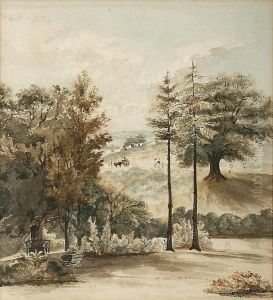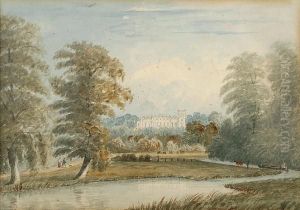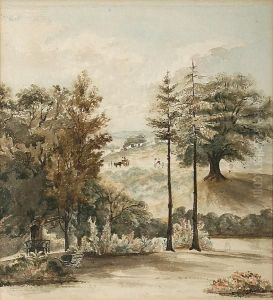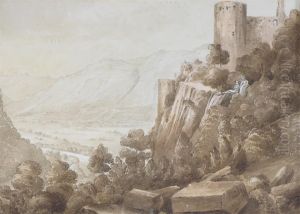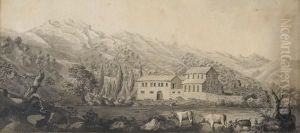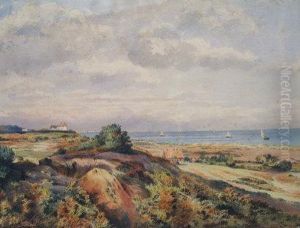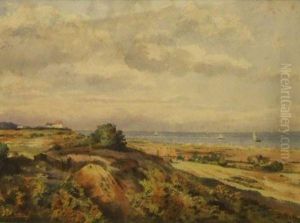John Thomas Selwin Ibbetson Paintings
John Thomas Selwin Ibbetson, born in 1799, was a British artist whose career spanned the early to mid-19th century. Not as widely known as some of his contemporaries, Ibbetson specialized primarily in landscape painting, capturing the bucolic countryside of England with a particular focus on accuracy and naturalism.
Little is known about Ibbetson's early life and training, which is a common issue when studying artists who did not achieve significant fame during their lifetimes. However, it is clear that he developed a keen eye for landscapes, likely influenced by the picturesque tradition that was popular during his time. This movement emphasized the beauty of the countryside and often idealized rural life, and Ibbetson's works certainly echo this sentiment.
Throughout his career, Ibbetson exhibited his work at various institutions, including the British Institution and the Royal Academy of Arts. His paintings, characterized by their detailed depiction of trees, foliage, and pastoral settings, reflect a quiet and serene view of nature. Despite the intricacy of his work, Ibbetson never gained the same level of recognition as some of his peers, such as John Constable or J.M.W. Turner, whose works overshadowed many artists of the period.
Ibbetson passed away in 1869, leaving behind a modest but dedicated body of work that continues to be appreciated by connoisseurs of British landscape painting. His paintings can be found in various art collections and occasionally appear at auction, where they are valued for their contribution to the 19th-century landscape genre. Although his name is not as well-known in the annals of art history, his commitment to capturing the English countryside provides a valuable glimpse into the rural aesthetics of his era.
